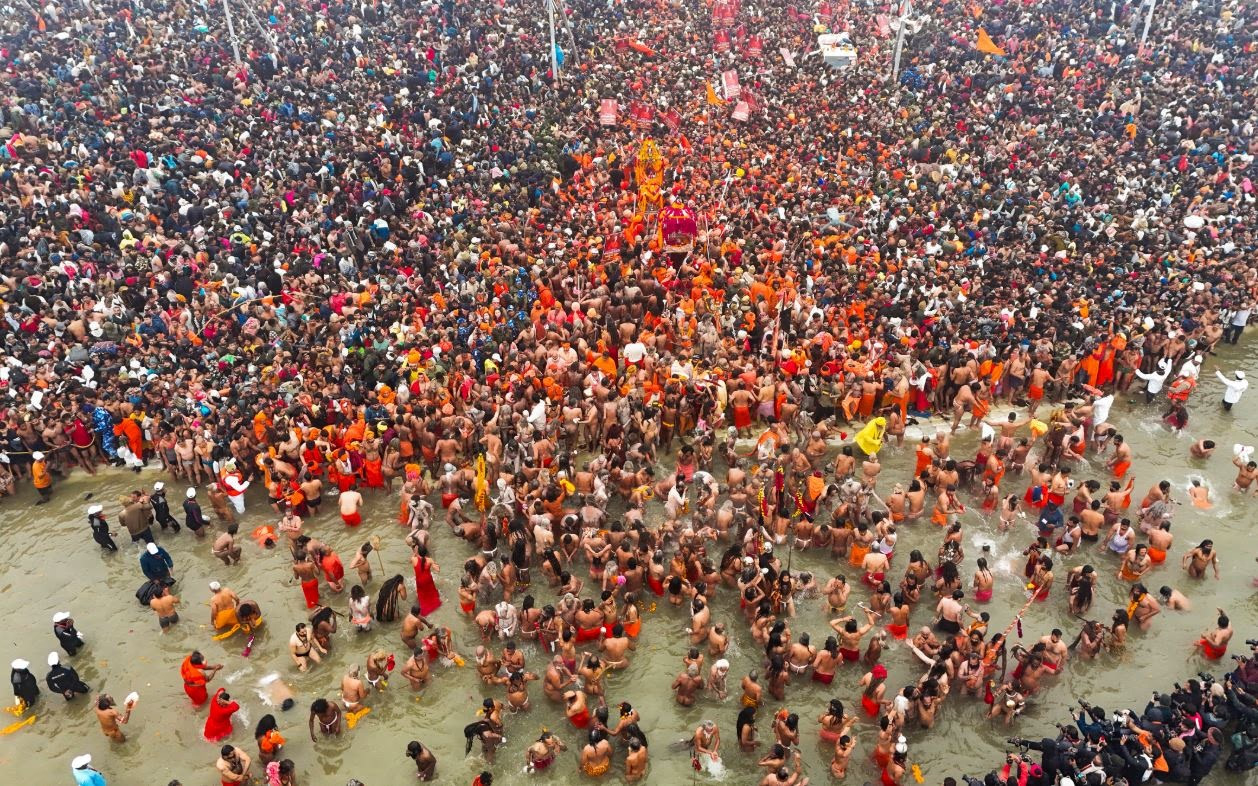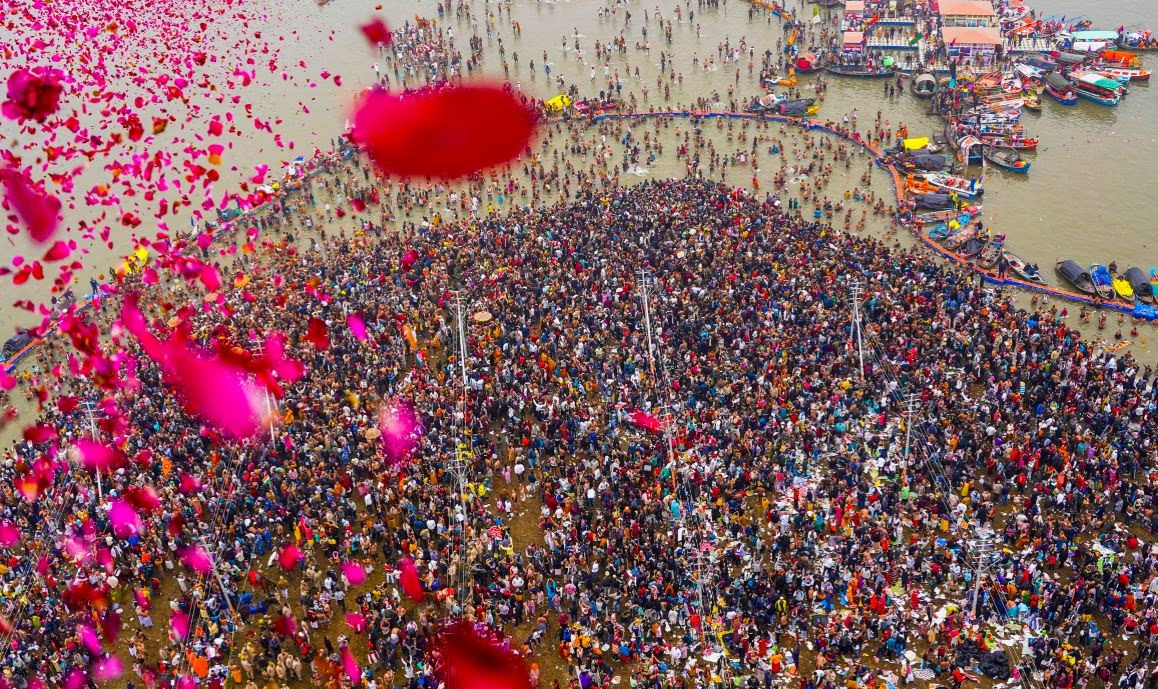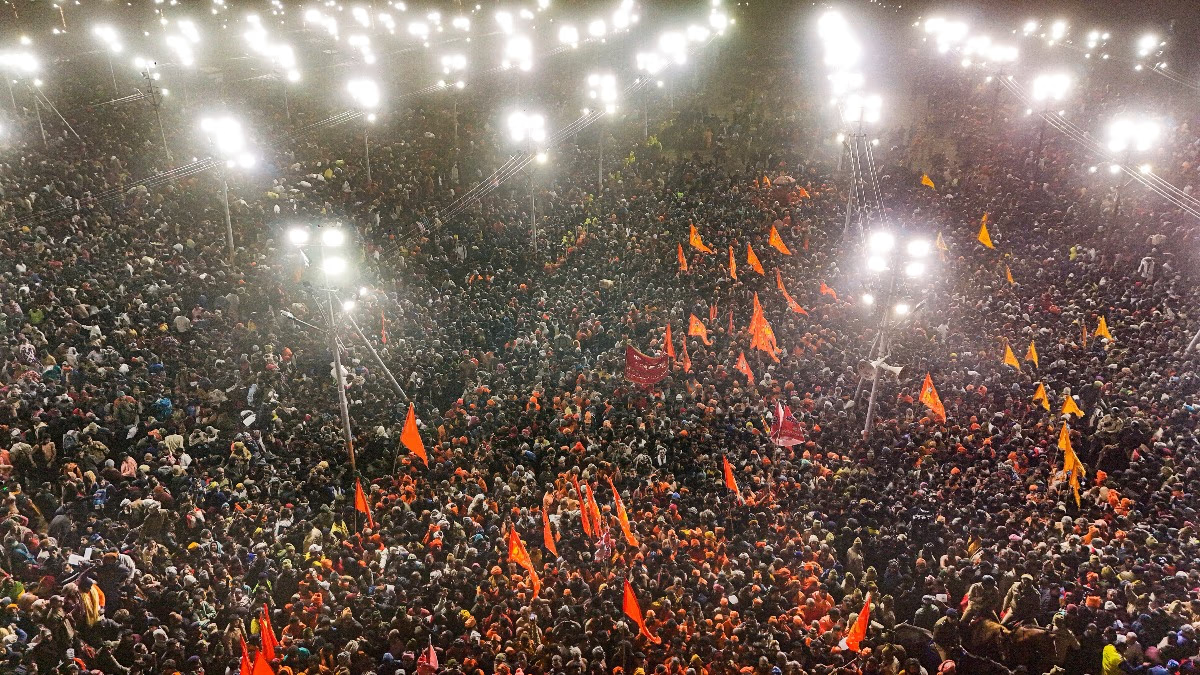In Prayagraj's Maha Kumbh, it's anticipated that 450 million devotees will bathe in the sacred confluence. Remarkably, over 50 million devotees attended the first two days, setting an unprecedented record. But how is such a colossal crowd counted? Is it mere estimation, or are precise methods employed? Today, we explore the advanced techniques adopted to count attendees at the world's largest religious congregation, the Kumbh Mela.
Counting the Crowd
Maha Kumbh 2025 stands out as a significant event, coinciding with a unique celestial alignment occurring every 144 years, hence termed Mahakumbh. This year, more devotees than ever are attending. To manage and accurately count this influx, the Uttar Pradesh government has implemented high-tech equipment, notably deploying AI-based cameras to monitor the crowd effectively.
A specialized 'Crowd Assessment Team' has been formed to count attendees in real time, utilizing bespoke cameras armed with artificial intelligence. These cameras scan faces, estimate the crowd size during specific timeframes, and determine how many thousands have entered the Mela area daily. Currently, 1800 such cameras populate the Maha Kumbh's expanse. Additionally, drones aid in measuring crowd density over defined spaces, helping calculate participation rates and the number of pilgrims who have taken a holy dip at the confluence.

Source: aajtak
Using Drones and AI
Picturing the vast swarm at the Maha Kumbh is tricky without sophisticated estimates. Enter AI-based high-tech cameras with 360-degree views, including 1100 fixed and about 744 mobile cameras scattered throughout the Mela zone, meticulously counting the audience.
Besides, other innovative methods count the influx. For example, the 'People Flow' technique follows the number of attendees arriving from various routes. It assesses crowd density in sensitive areas through these advanced cameras. Mobile phones provide average data through a specialized app, transmitted to the Crowd Assessment Team for finalizing attendance figures.

Source: aajtak
Satellite Aid in Gathering Devotee Data
Previously, the tally relied on compiling data from trains, buses, and boats heading to Kumbh. Statistics included counting visitors in the ashrams of saints and sages in the Mela area, alongside road data. Despite ongoing tracking of buses and trains, the administration now utilizes advanced technology for more accurate statistics.
Following 2013, reports and data provided by officials formed the go-to crowd counting method. However, newer technologies aim to gather more precise data. Historically, satellites counted attendees but couldn't avoid multiple counts of returnees within the Mela, leading to inaccurate data.
Counting Began with Head Counts
Counting attendees at the Kumbh began in the 19th century. Under British rule, barricades marked routes leading to Kumbh to count individuals one by one, often predicting crowds based on train ticket sales. However, with crowds swelling from millions to billions, counting methods have evolved significantly.
Despite advances, acquiring exact statistics is challenging. While face scans minimize repeat counting, gathering completely accurate data on Maha Kumbh attendees remains nearly impossible. Advanced technologies only help estimate attendance at this grand congregation.




